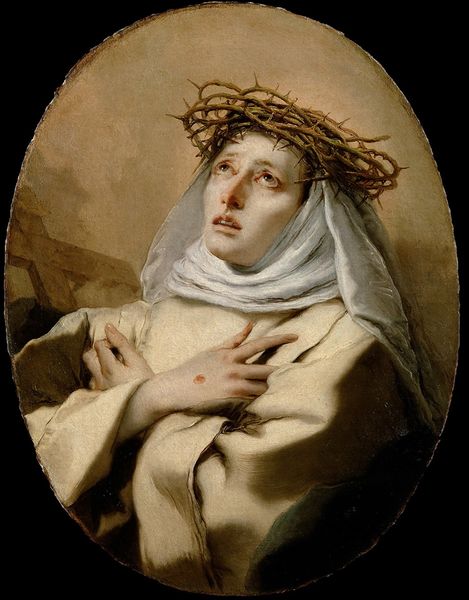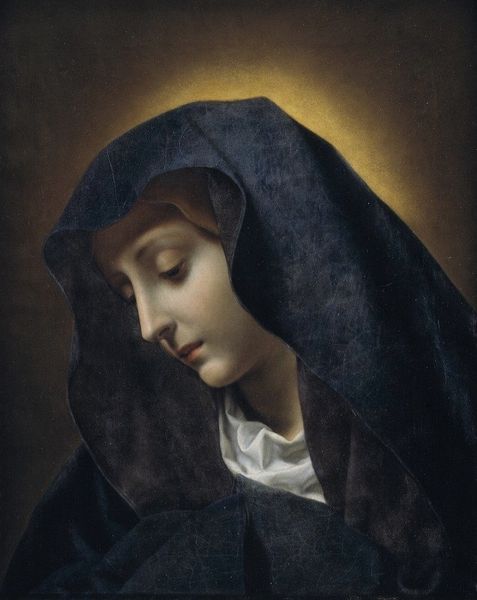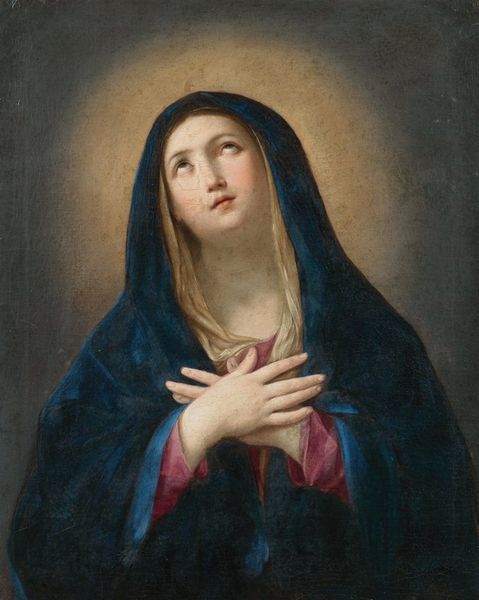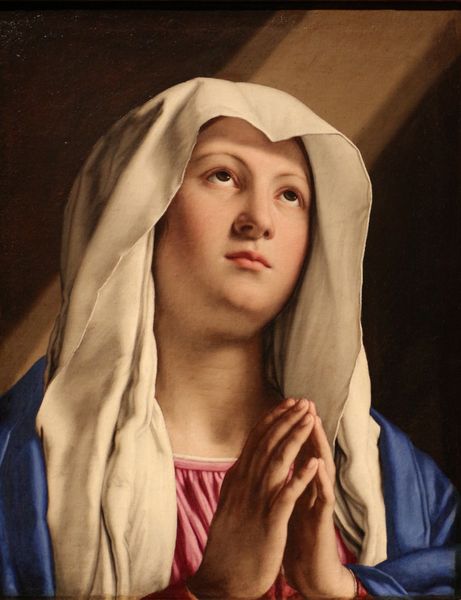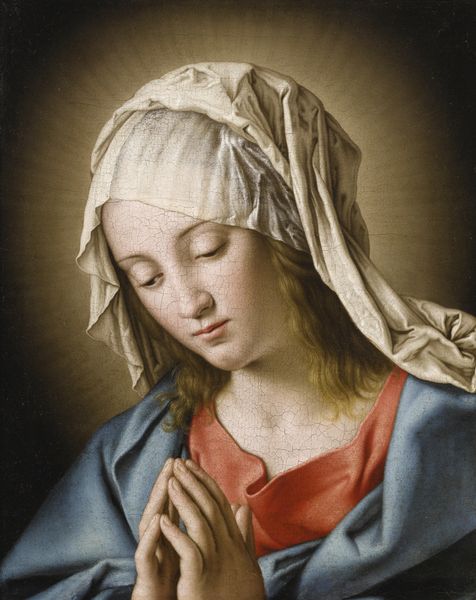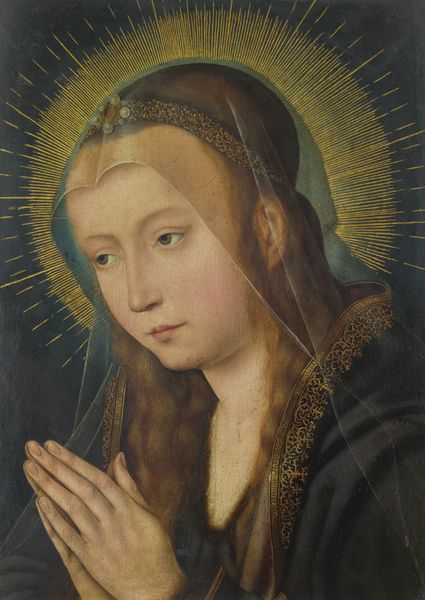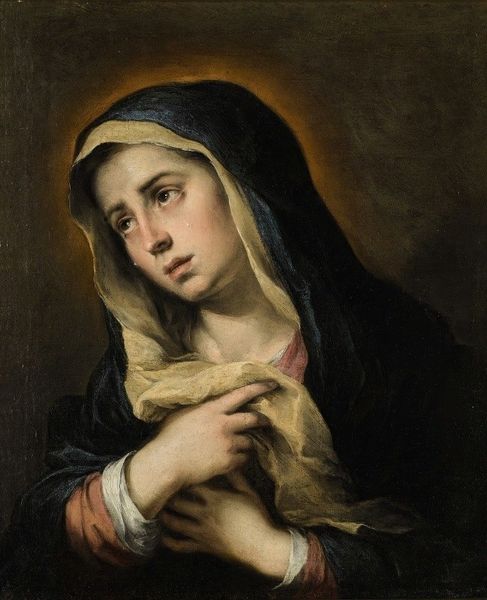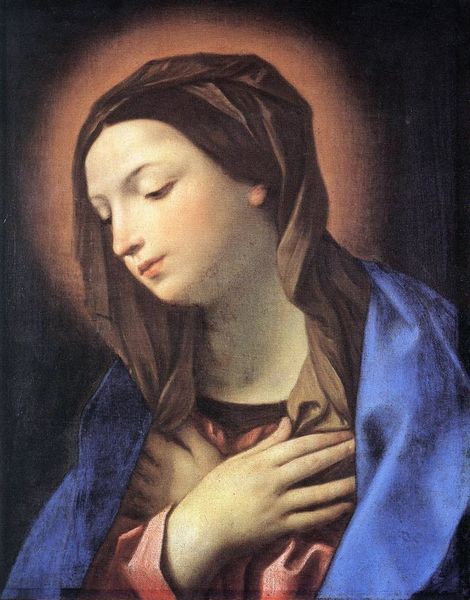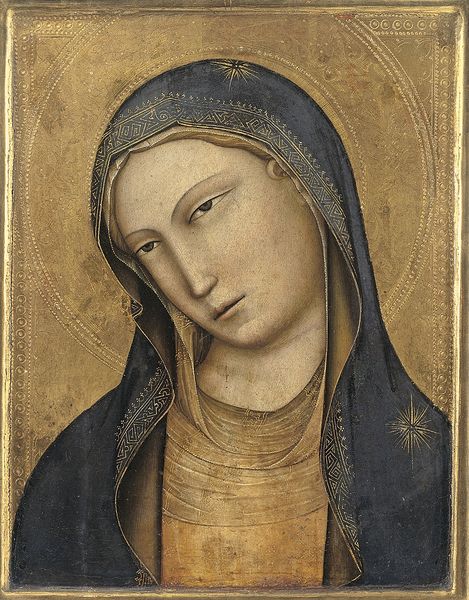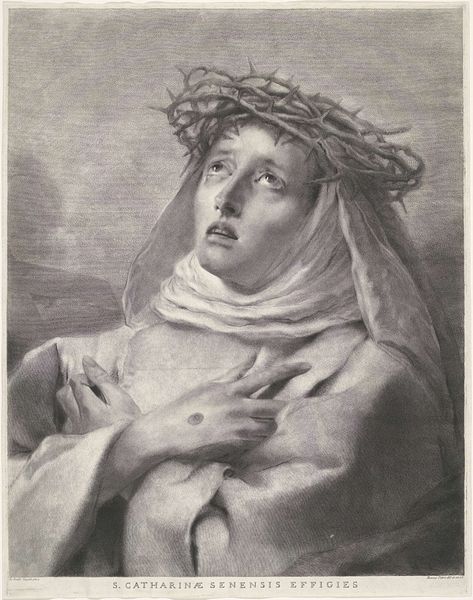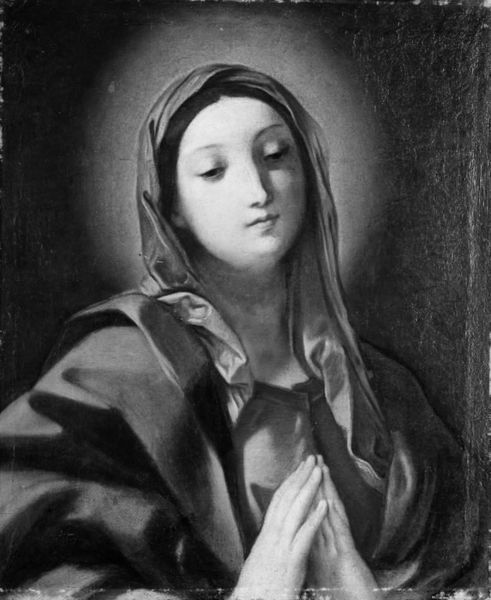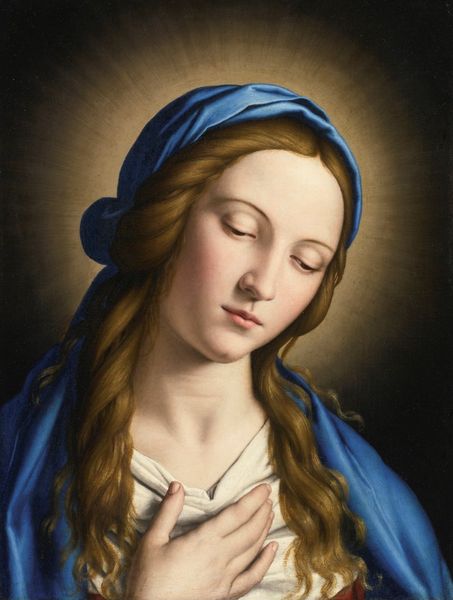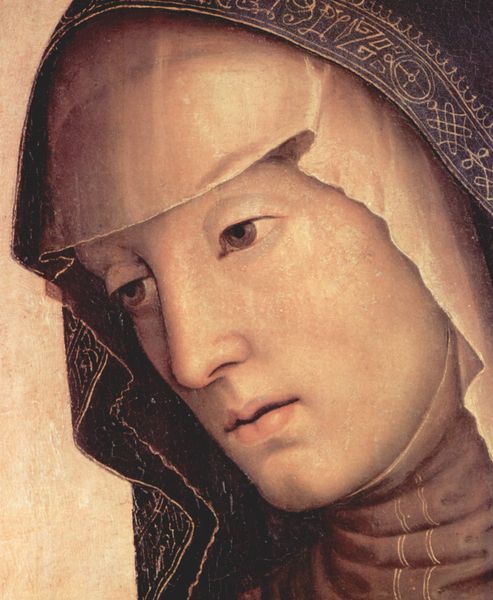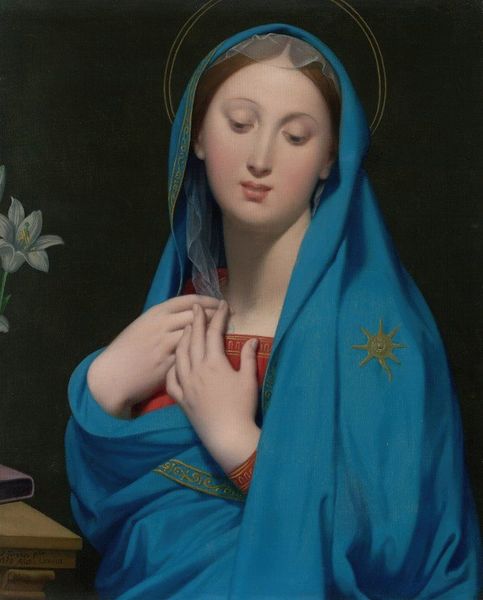
painting, oil-paint
#
portrait
#
baroque
#
painting
#
oil-paint
#
history-painting
#
italian-renaissance
Copyright: Public Domain: Artvee
Editor: We're looking at Carlo Dolci's oil painting, "St. Catherine of Siena." The portrait captures the saint with an incredibly melancholic and intimate feel. The delicate handling of light is so striking. What draws your eye in this piece? Curator: You know, it’s funny, isn’t it? We look at religious art like this, and it’s easy to see it through the lens of piety. But, for me, it’s that little tear, suspended, about to embark on its lonely journey down her cheek. I think Dolci was showing us a deeply human moment of suffering. Notice that this is also an Italian Renaissance-era depiction of St. Catherine adorned with a crown of thorns; it merges both divine suffering with her more human characteristics. What do you make of that contrast? Editor: It gives her such dimension, doesn’t it? We’re used to seeing saints portrayed with a kind of untouchable holiness. Curator: Exactly. Dolci’s choice of a close crop intensifies this effect, pulling us right into Catherine's private, almost forbidden grief. This intimacy, achieved with such skillful handling of paint, speaks volumes about the Baroque period’s exploration of human emotion. You almost feel like you're intruding, no? Editor: I can definitely see that. I had expected something more, well, iconic. This is so much more personal. It almost feels rebellious, in a way, for religious art. Curator: Perhaps! What makes a painting 'rebellious'? Perhaps it makes her more real? More understandable and therefore more capable of conveying religious passion? It challenges your ideas, and leaves a memorable emotion imprinted onto the viewers mind! Editor: You've really made me reconsider what I thought I knew about Baroque art. Curator: And that’s what it’s all about, isn't it? Art shaking our souls and stirring something new.
Comments
No comments
Be the first to comment and join the conversation on the ultimate creative platform.
